Pakistani Gold Earrings
Pakistani Gold Earrings - Introduction
Pakistani gold earrings are celebrated for their intricate designs and cultural significance. From the regal Chandbalis and ornate Jhumkas and magars to elegant Studs and classic Hoops, these earrings showcase exceptional craftsmanship. Each style, often adorned with precious stones and traditional motifs, reflects the rich heritage of South Asian artistry. Whether for weddings, festivals, or daily wear, Pakistani gold earrings add a touch of elegance and timeless beauty to any ensemble. Here's a detailed overview of various types of Pakistani earrings, often worn at weddings, festivals, and other traditional occasions.
Regional Variations are given below each earring type, however, separate pages for Punjabi, Sindhi Balochi and Pashtun jewelry variations will be added as pages dedicated to each variation.
Pakistani Gold Earrings - Jhumkay (or Chandelier) Earrings
- Description
Jhumkay, also known as chandelier earrings, are iconic bell-shaped earrings characterized by their intricate designs and graceful sway. These earrings typically feature a domed or bell structure adorned with dangling beads, pearls, or gemstones, making them a perfect blend of traditional artistry and elegance. Jhumkay are a timeless favorite in Pakistani jewelry, often seen during weddings, festivals, and cultural celebrations.
- Origins:
Ancient Origins: The concept of Jhumkay can be traced back to the Indus Valley Civilization (3300–1300 BCE), where early forms of bell-shaped earrings were worn as ornaments symbolizing beauty and status.
Mughal Era: The Mughal era (16th–19th centuries) saw the evolution of Jhumkay into more elaborate forms, with intricate metalwork, precious stones, and Persian influences. Mughals contributed significantly to the detailed artistry seen in Jhumkay, making them popular among the royalty and nobility.
Cultural Significance: In Pakistani as well as other South Asian cultures, Jhumkay symbolize femininity and grace. They are a staple in bridal jewelry, representing tradition and cultural heritage. Brides often wear Jhumkay as part of their wedding attire, complemented by matching necklaces and bangles.
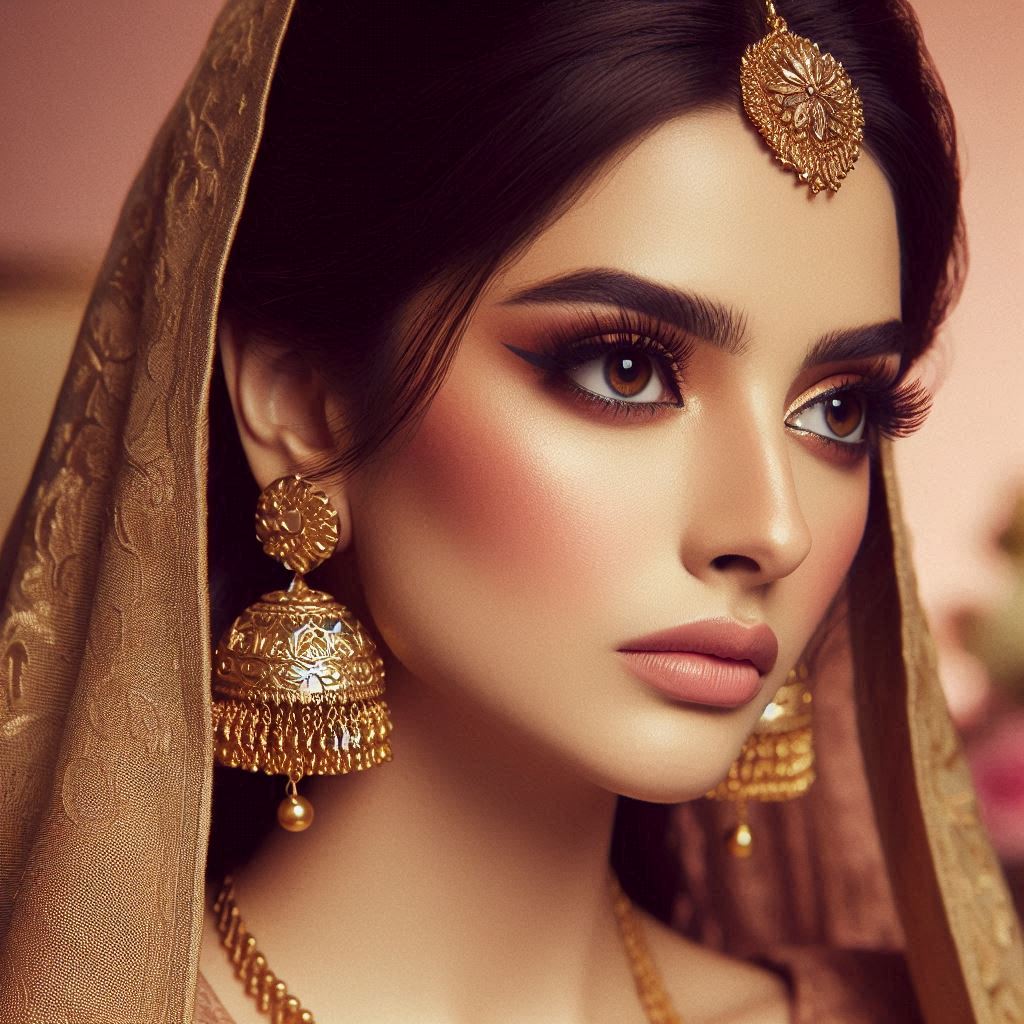
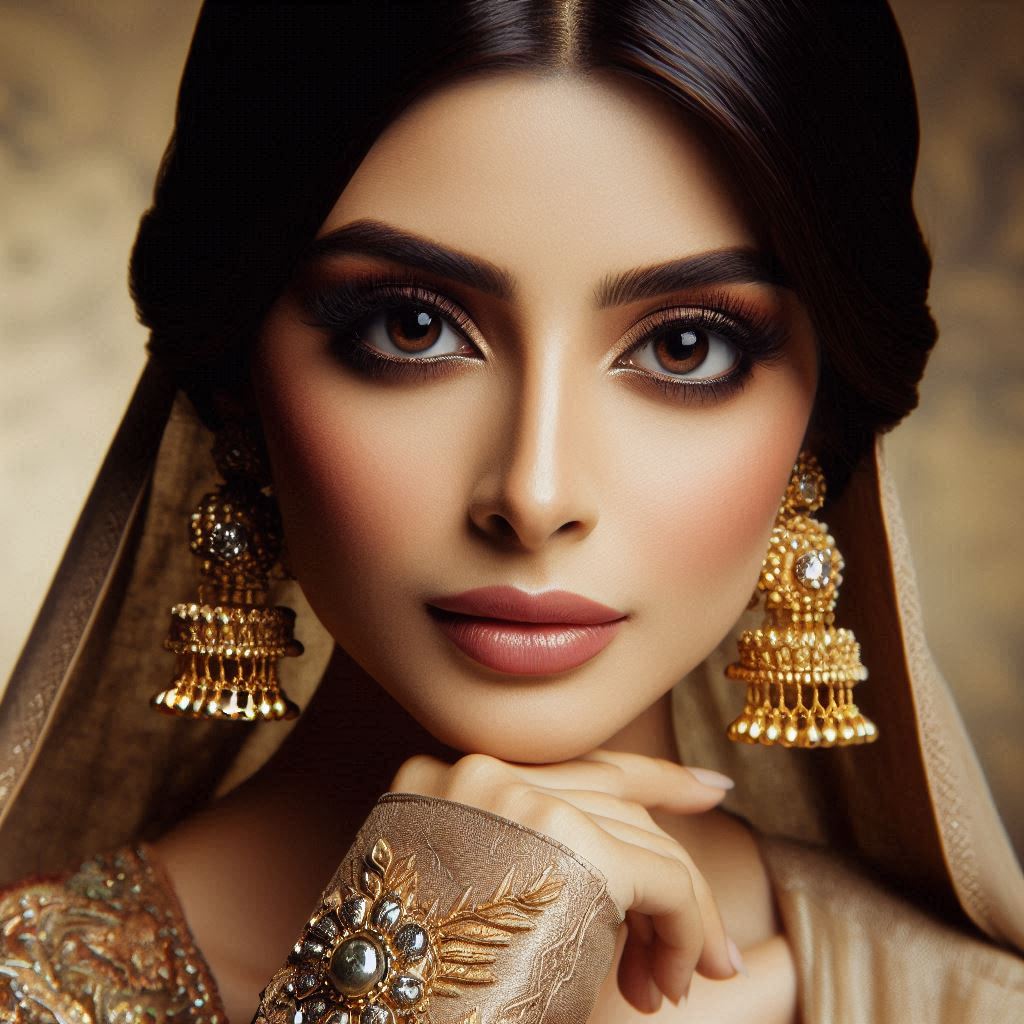
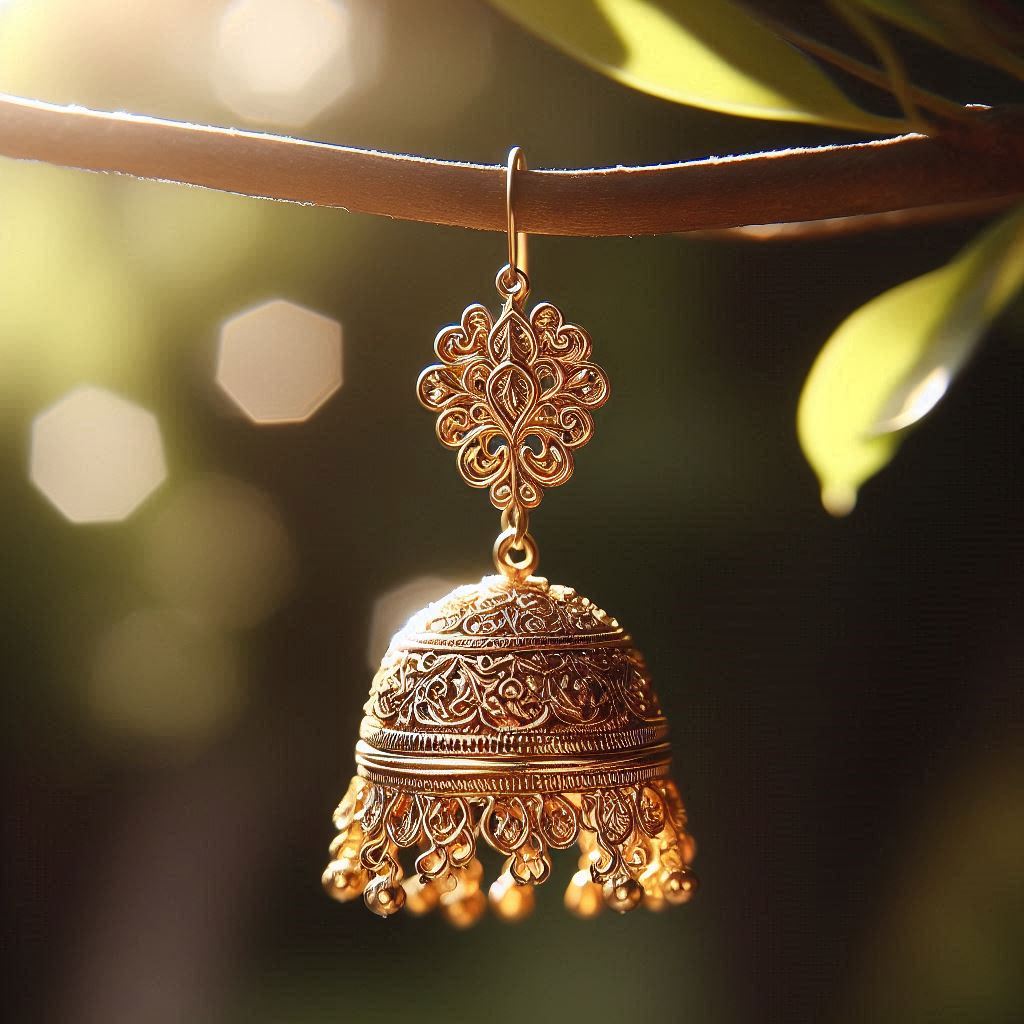
Jhumkay - Regional Variations
Punjabi Jhumkay: Known for vibrant designs featuring floral, bird, and peacock motifs. They often incorporate meenakari (enamel) art with detailed filigree work, symbolizing the colorful Punjabi culture.
Sindhi Jhumkay: Characterized by intricate glass and mirror work, these earrings reflect the rich craftsmanship of Sindh. Sindhi Jhumkay are often bolder, with vibrant colors and patterns representing traditional motifs.
Balochi Jhumkay: Typically, larger and heavier, Balochi Jhumkay reflect the tribal aesthetics of Balochistan. They often use rustic designs and materials like silver, with intricate carvings depicting tribal symbols.
Pashtun Jhumkay: Pashtun Jhumkay are characterized by their larger size and bold designs. These earrings often incorporate silver or a mix of metals, with intricate engravings and dangling elements like small bells or beads.
Pakistani Gold Earrings - Chand Bali (Moon-Shaped) Earrings
- Description
Chandbali earrings are crescent or moon-shaped earrings renowned for their luxurious design and intricate craftsmanship. The word "Chandbali" is derived from the Urdu words "Chand" (moon) and "bali" (earring). These earrings often feature intricate filigree work, pearls, and gemstones, making them an elegant choice for weddings and special occasions.
- Origins
Mughal Influence: Chandbali earrings have their roots in the Mughal period (16th–19th centuries), where they were popular among the Mughal royalty. The Mughals introduced the crescent moon shape, representing grace and elegance, into jewelry designs.
Rajput Influence: Chandbali earrings were also influenced by Rajput jewelry, symbolizing feminine beauty and sophistication. Rajput queens and women often wore Chandbalis adorned with pearls and precious stones, making them a status symbol.
Cultural Significance: Chandbali earrings hold a special place in Pakistani culture, symbolizing femininity and tradition. They are a favored choice for brides, often complementing the intricate embroidery and embellishments of bridal attire.
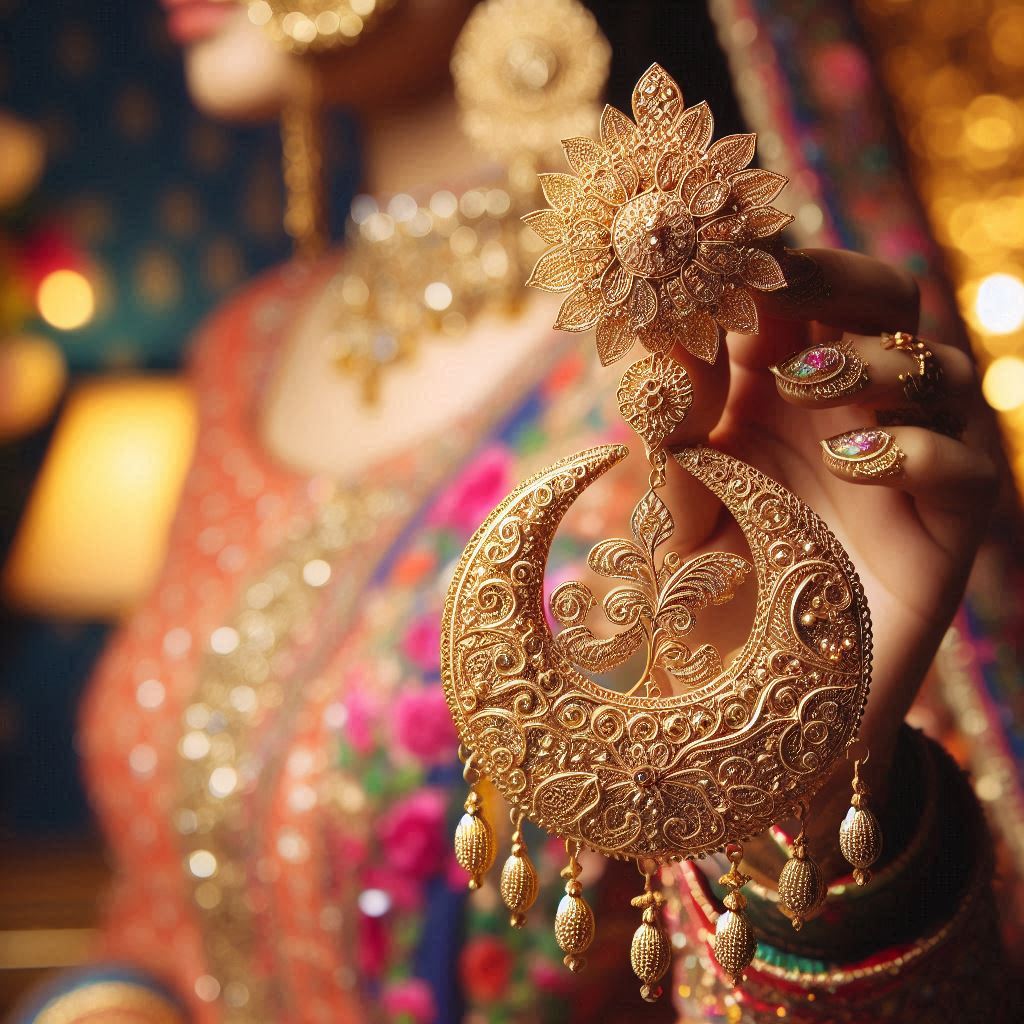
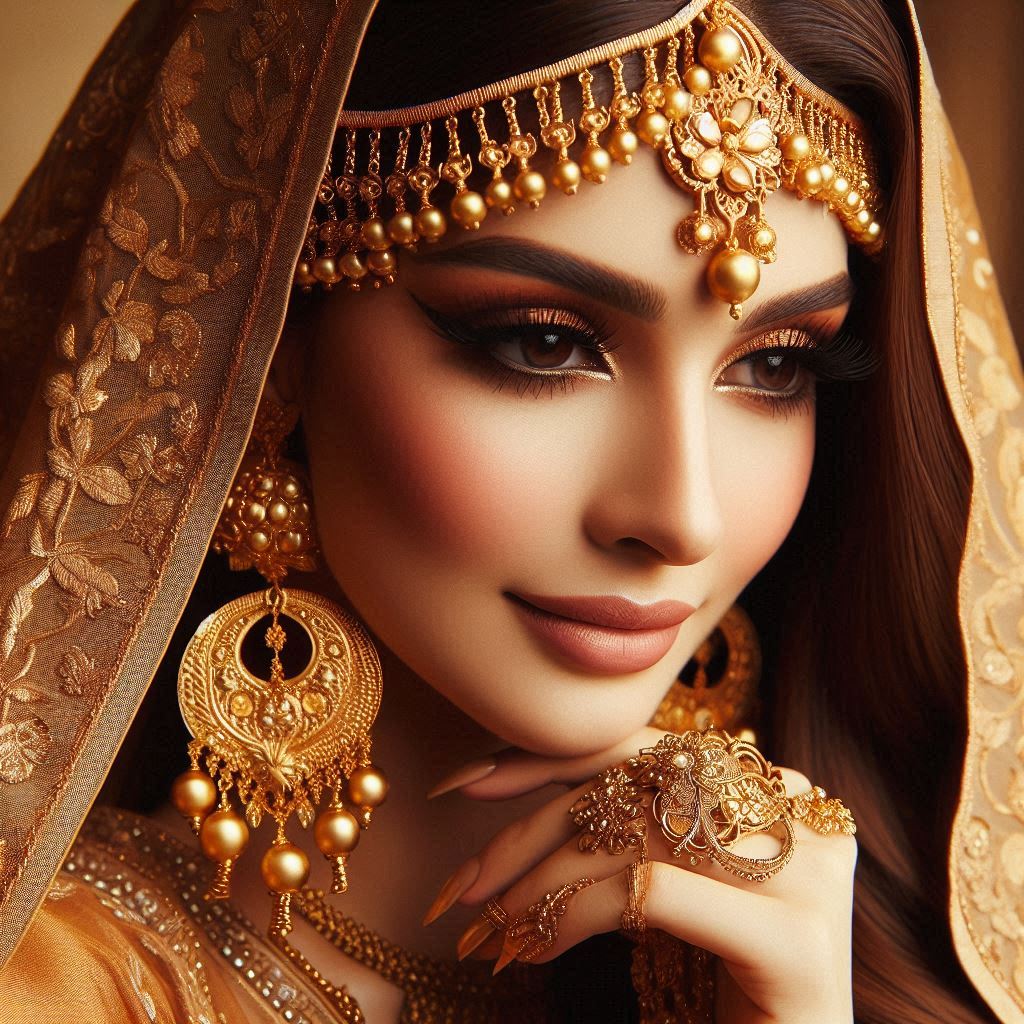
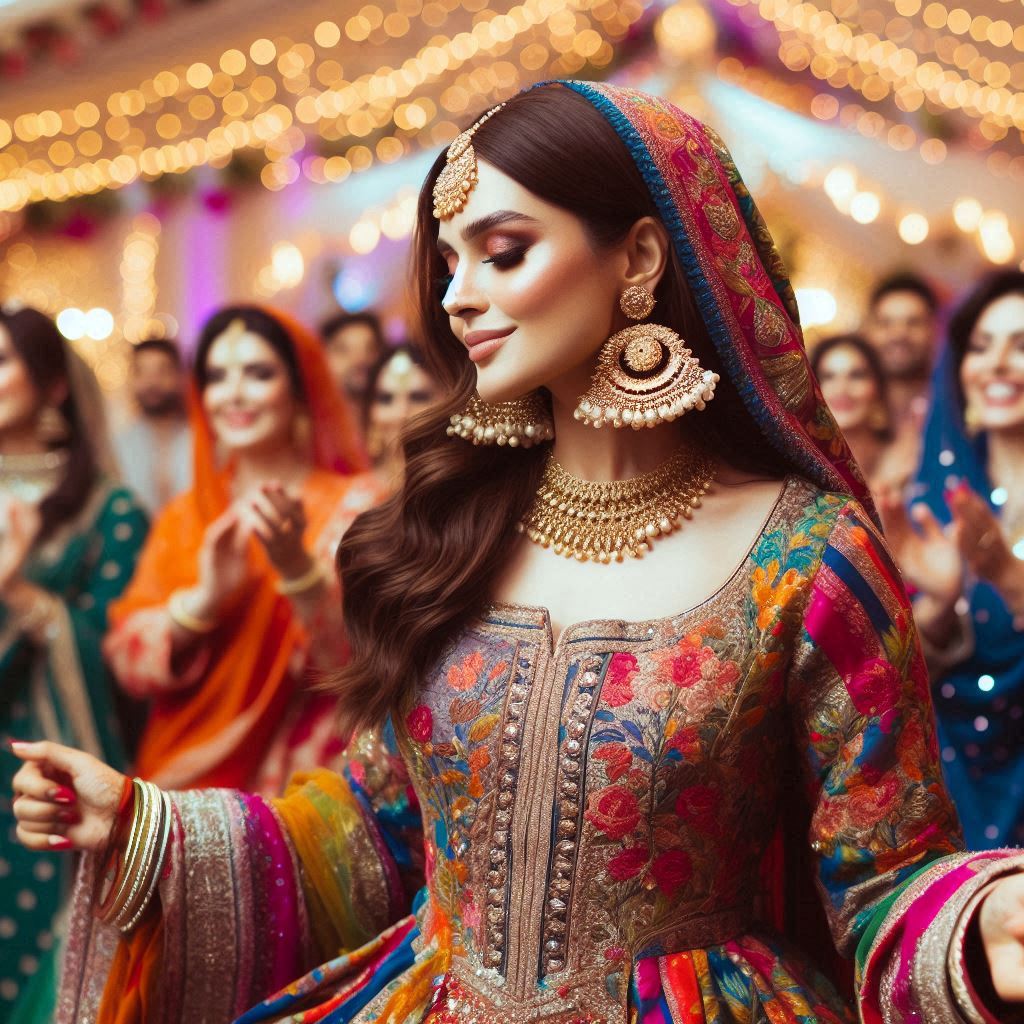
Chandbali Earrings - Regional Variations
Punjabi Chandbali: These earrings feature elaborate designs with detailed meenakari work and vibrant gemstones, reflecting Punjab's cultural richness and artistic heritage.
Sindhi Chandbali: Known for intricate glass work and bold colors, Sindhi Chandbalis showcase traditional craftsmanship with mirror and enamel elements.
Balochi Chandbali: Crafted from heavier materials, Balochi Chandbalis often incorporate tribal motifs and rustic designs, emphasizing the bold aesthetics of Balochistan.
Pashtun Chandbali: Pashtun Chandbalis are distinguished by their crescent-shaped design, often crafted in silver with intricate metalwork. They feature bold engravings and sometimes include dangling elements like beads, coins, or small bells.
Pakistani Gold Earrings - Magar (Crocodile) & Machhli (Fish) Earrings
- Description
Magar and Machhli earrings, also known as crocodile and fish earrings,
are a unique and culturally rich form of jewelry deeply rooted in South Asian
traditions, particularly within Pakistan and India. These earrings are not just
ornamental pieces; they are symbolic representations of heritage, artistry, and
the natural world. The crocodile term is used mainly for the length of the earring while 'Machhli' has a small fish like ornament attached to the main stud.
- Design and Symbolism
Magar (Crocodile) Earrings: These earrings typically feature a stylized depiction of length that looks like a crocodile, a creature that symbolizes strength, power, and protection in many cultures. The length is often rendered with intricate detailing, sometimes adorned with gemstones, enamel work, or even kundan, a traditional form of gem setting.
Machhli (Fish) Earrings: Fish motifs have been a part of South Asian jewelry design for centuries, symbolizing fertility, abundance, and the flow of life. Machhli earrings often depict fish in a graceful, curved form, sometimes with fins and scales highlighted by detailed metalwork or embellishments like pearls and colored stones.
- Origins
Indus Valley Civilization (3300–1300 BCE): One of the earliest known civilizations in South Asia, the Indus Valley Civilization, provides the first glimpses of elaborate jewelry-making. Artifacts from archaeological sites such as Mohenjo-Daro and Harappa include various forms of jewelry, including earrings, made from materials like gold, silver, and semi-precious stones. The use of animal motifs, including fish, can be seen in some of these ancient designs, hinting at the early symbolic significance of these creatures.
Mughal Empire (1526–1857): The Mughal period was a golden age for jewelry design in South Asia, with a particular emphasis on intricate craftsmanship and the use of precious materials. The Mughal emperors were great patrons of the arts, and their reign saw the development of many classic jewelry designs that are still in vogue today. It is during this time that the Magar (crocodile) and Machhli (fish) motifs likely became popular, as animal motifs were commonly used in various forms of Mughal art and jewelry.
Cultural Significance
Symbolism in Various Traditions: Both Hinduism and Islam, the dominant religions in South Asia, have rich symbolic traditions that have influenced jewelry design. In Hindu culture, the crocodile (magar) is often associated with the river goddesses and water deities, symbolizing strength and protection. The fish (machhli), on the other hand, is associated with fertility, prosperity, and life. In Islamic culture, while the depiction of animals is less common in religious art, the use of animal motifs in secular jewelry was widespread, often symbolizing power and grace.
Magar & Machhli - Regional Variations
The design and symbolism of Magar and Machhli earrings vary across different regions of South Asia. In the Sindh region of Pakistan, for example, the crocodile motif might be more stylized and abstract, while in Rajasthan, India, the fish motif might be more elaborate and adorned with colorful enamel work. These regional variations reflect the diverse cultural influences that have shaped the development of these earrings.
Punjabi Magar: Known for detailed meenakari work and gemstones, Punjabi Magar earrings reflect the region's vibrant culture and artistry.
Sindhi Magar: Characterized by intricate silver work and traditional motifs, Sindhi Magar earrings showcase the craftsmanship and heritage of Sindh.
Balochi Magar: Typically larger and bolder, Balochi Magar earrings are crafted from heavy metals, featuring tribal motifs and rustic designs.
Pashtun Magar: Pashtun Magar earrings are less common but may incorporate elements of tribal jewelry, often crafted from silver or other metals. They feature strong, bold designs with engravings that reflect the tribal roots.
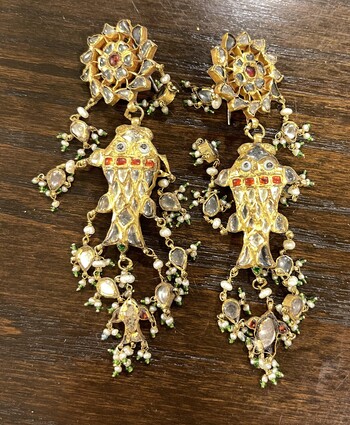
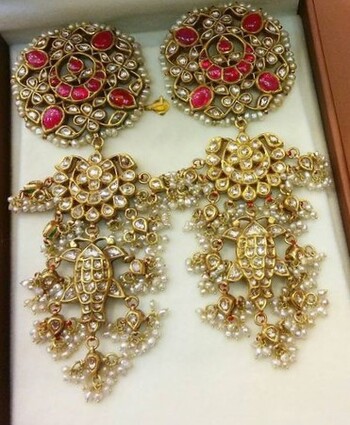
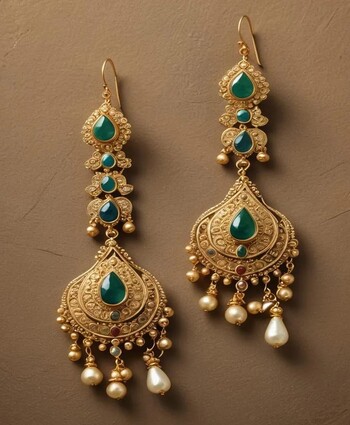
Pakistani Gold Earrings - Bali (Hoop Earring)
- Description
Bali earrings, or hoop earrings, are circular hoops that come in various sizes and designs. Known for their versatility, Bali earrings can range from simple metallic hoops to intricate designs adorned with gemstones, beads, and filigree work. They are a common accessory for both casual and formal wear, offering a classic and chic look.
- Origins
Indus Valley Civilization: The origin of hoop earrings can be traced back to the Indus Valley Civilization (3300–1300 BCE), where circular ear ornaments were crafted from metals and terracotta, signifying elegance and sophistication.
Cultural Influence: The concept of hoop earrings has been embraced by various ancient civilizations, including Egyptians, Greeks, and Romans. Each culture contributed unique design elements, leading to the evolution of Bali earrings.
Pakistani Tradition: In Pakistan, Bali earrings hold cultural significance and are often worn during festivals and celebrations as a symbol of tradition and heritage. They have been integral to Pakistani jewelry for centuries, representing elegance and grace.
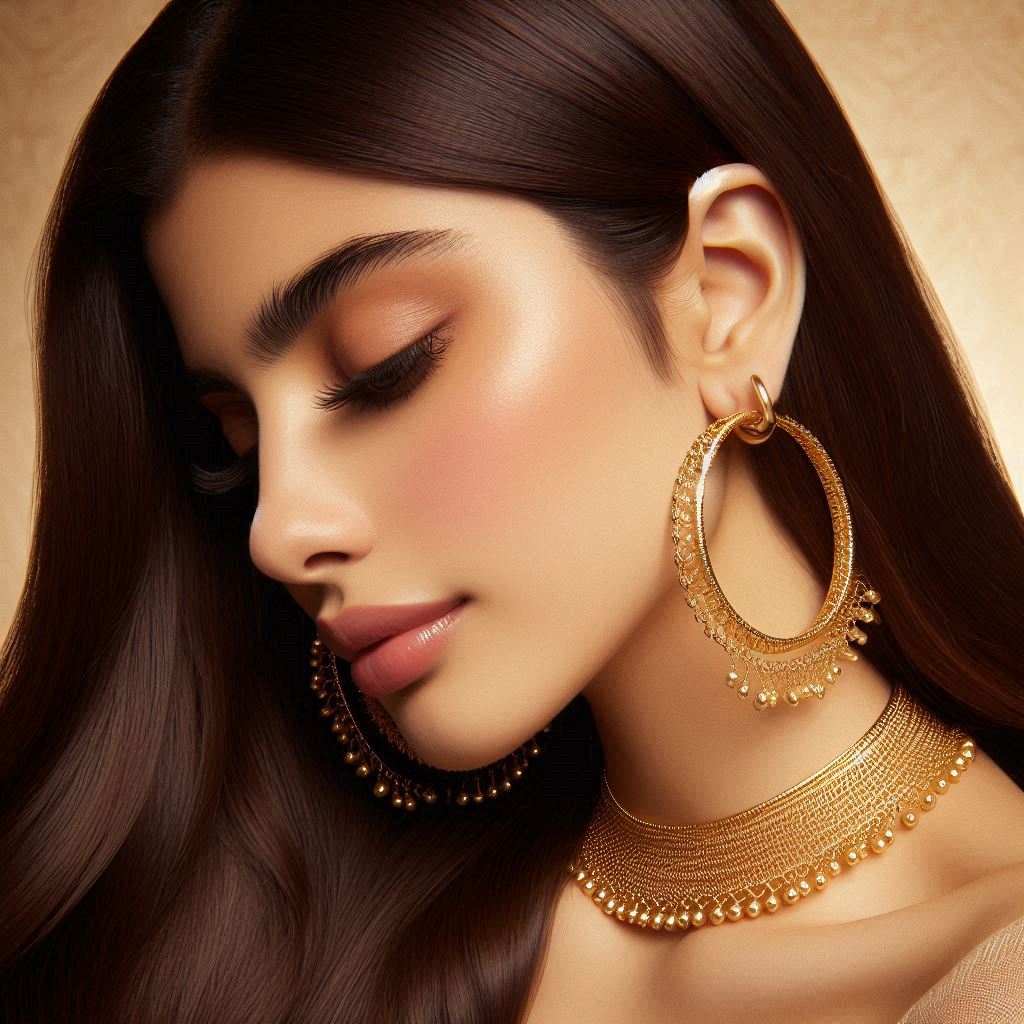
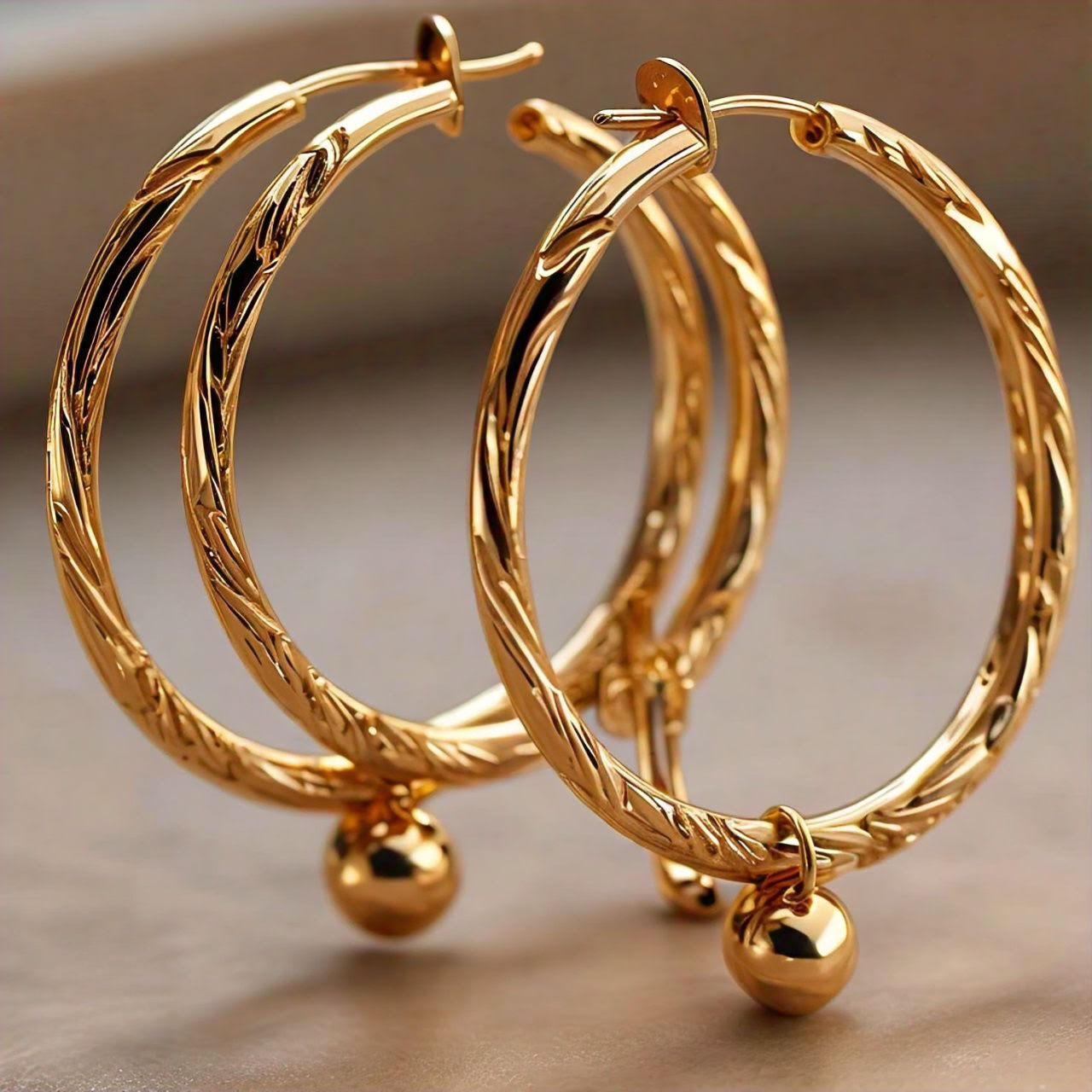
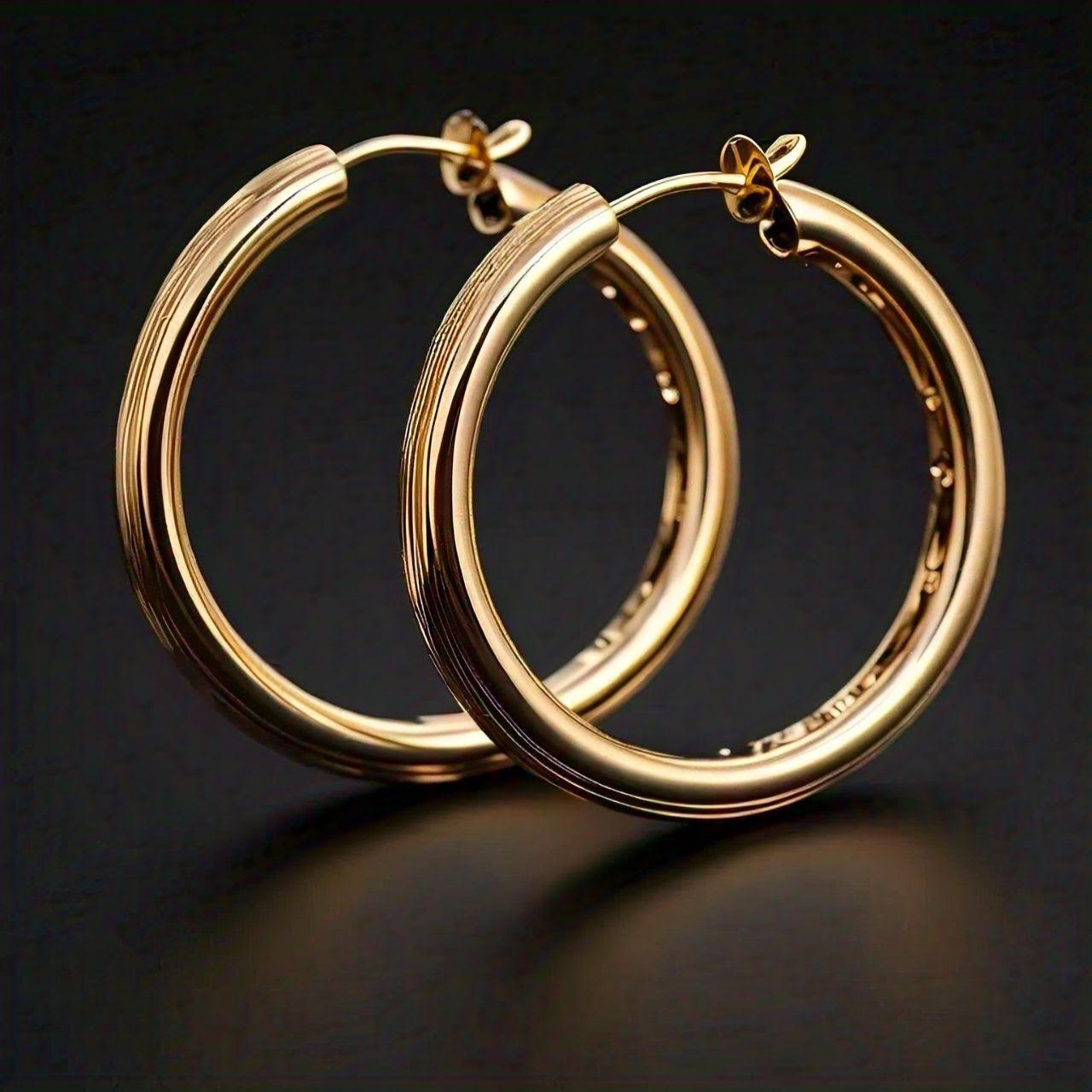
Pakistani Gold Earrings - Stud Earrings
- Description
Stud earrings are a classic and understated choice, often featuring a single gemstone, pearl, or intricate design that sits snugly on the earlobe. Stud earrings range from simple solitaires to more elaborate patterns, offering versatility for everyday wear and formal occasions. Their simplicity and elegance make them a popular choice among all age groups.
- Origins
Ancient History: Stud earrings have been worn since ancient times, with evidence in civilizations such as the Indus Valley and Egypt. They were crafted from precious metals and adorned with gemstones, symbolizing elegance and sophistication.
Cultural Significance: Stud earrings are a staple in Pakistani jewelry, symbolizing simplicity and elegance. They are practical for daily wear and are favored by women of all ages for their timeless appeal.
Modern Adaptations: Contemporary stud earrings incorporate various materials and designs, blending traditional and modern styles to suit diverse preferences.
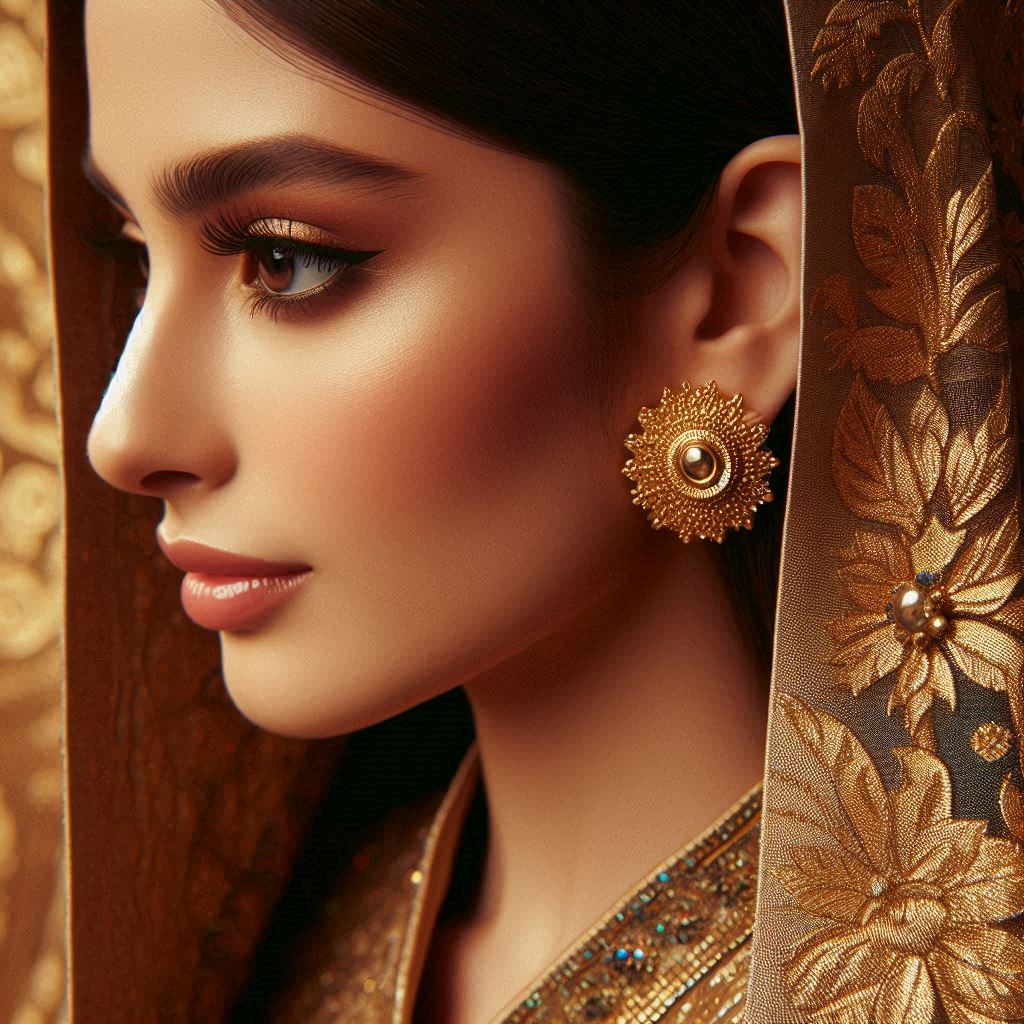
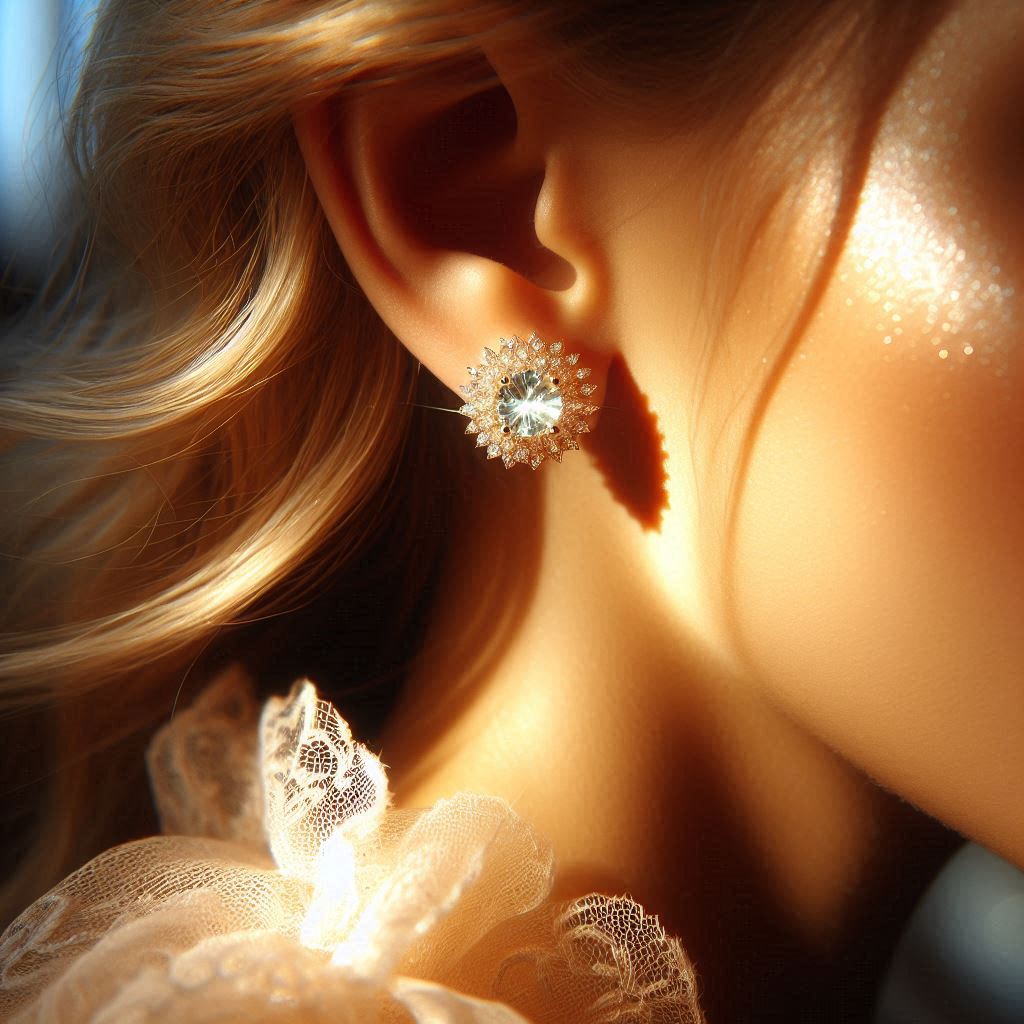
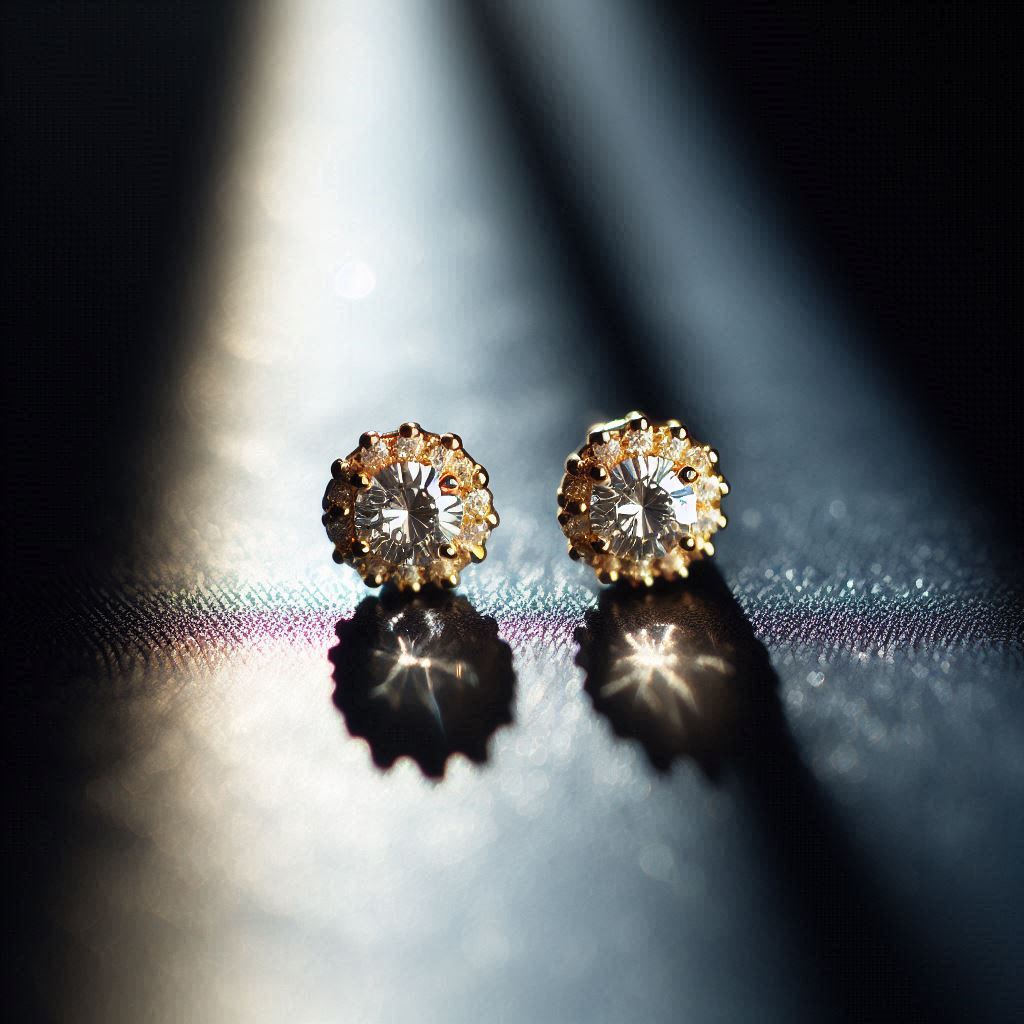
Pakistani Gold Earrings - Drop Earrings
- Description
Drop earrings feature a gemstone, pearl, or ornament that dangles below the earlobe. They vary in length and complexity, ranging from simple designs to intricate patterns with multiple layers. Drop earrings add elegance and sophistication to any outfit, making them a versatile choice for casual and formal occasions.
- Origins
Ancient History: Drop earrings have been worn since ancient times, with evidence in Greek and Roman civilizations. They were crafted from precious metals and gemstones, symbolizing elegance and grace.
Mughal Influence: The Mughal era popularized drop earrings, introducing intricate designs and the use of precious stones, pearls, and enamel work. Drop earrings became synonymous with luxury and sophistication.
Cultural Significance: Drop earrings are a staple in Pakistani jewelry, symbolizing elegance and femininity. They are worn during weddings, festivals, and traditional celebrations, adding grace and style to any ensemble.
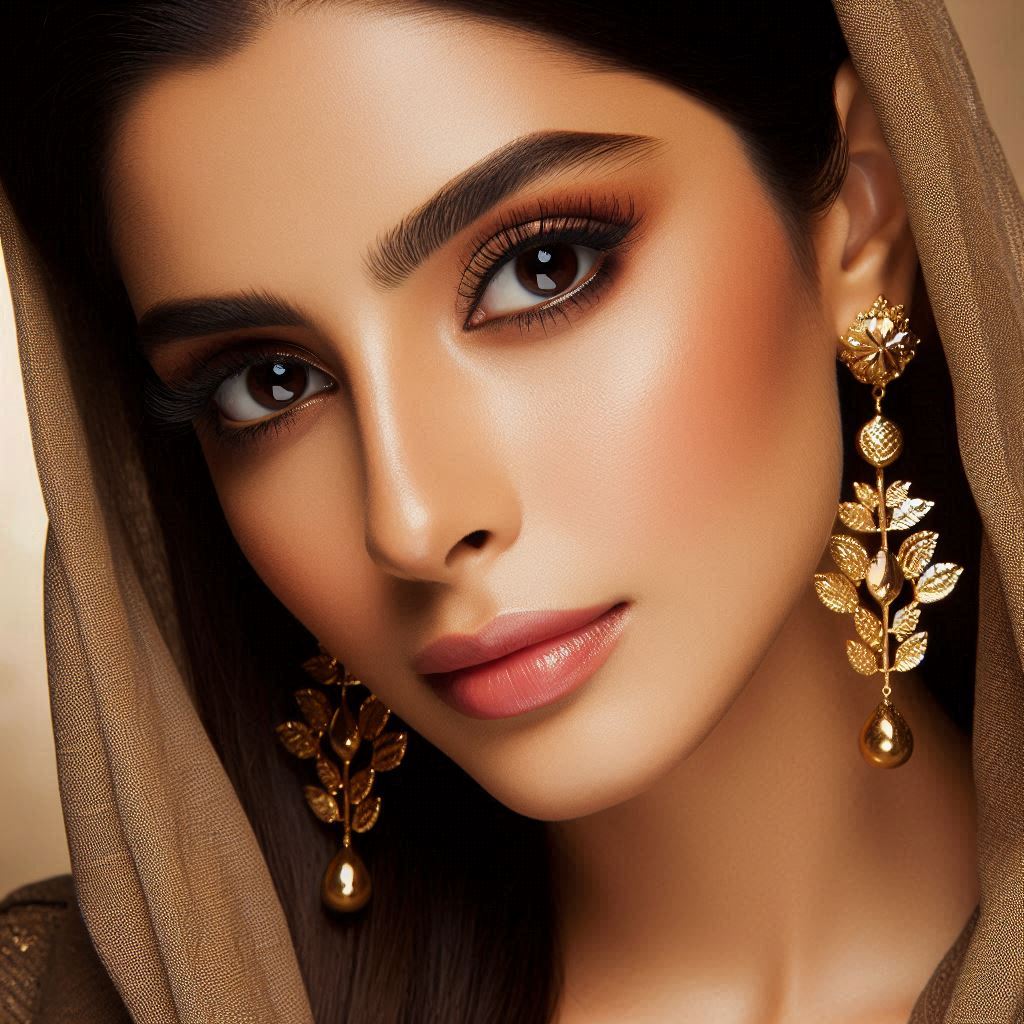
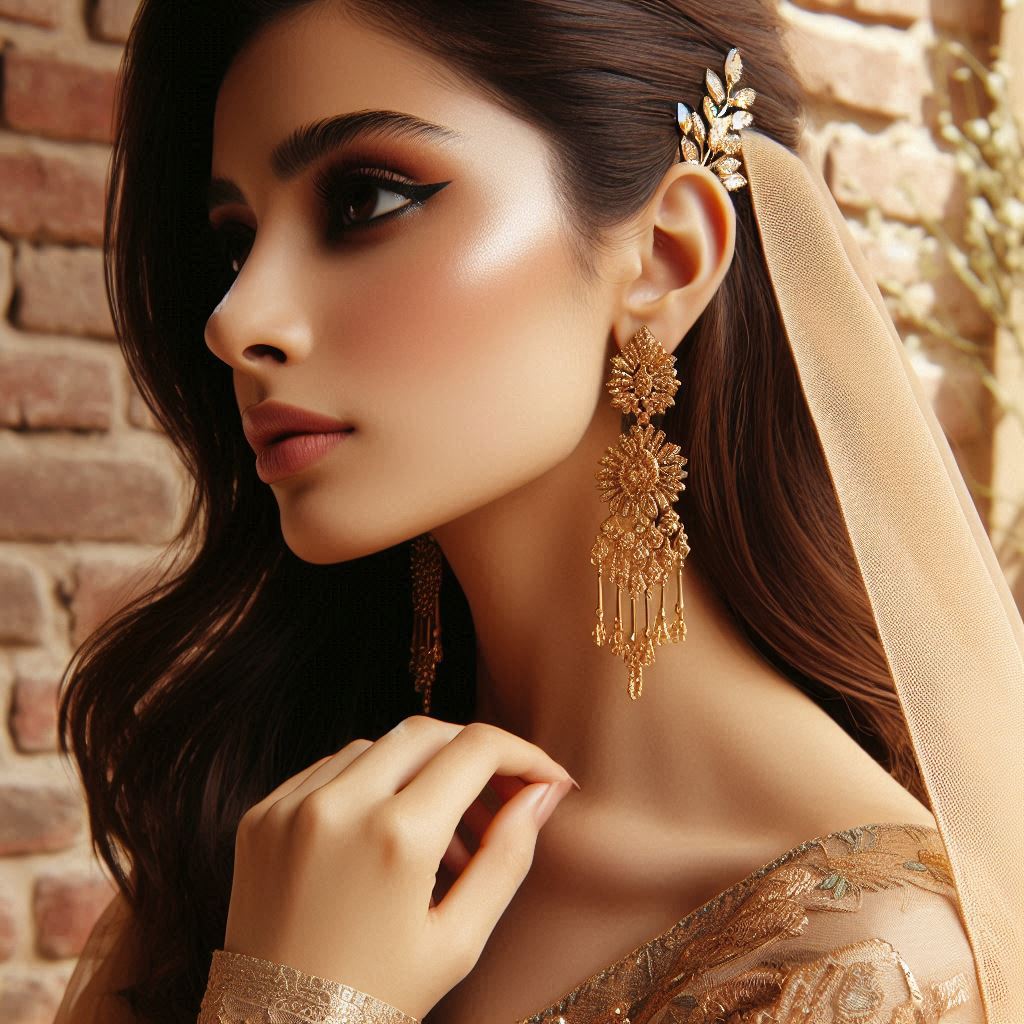
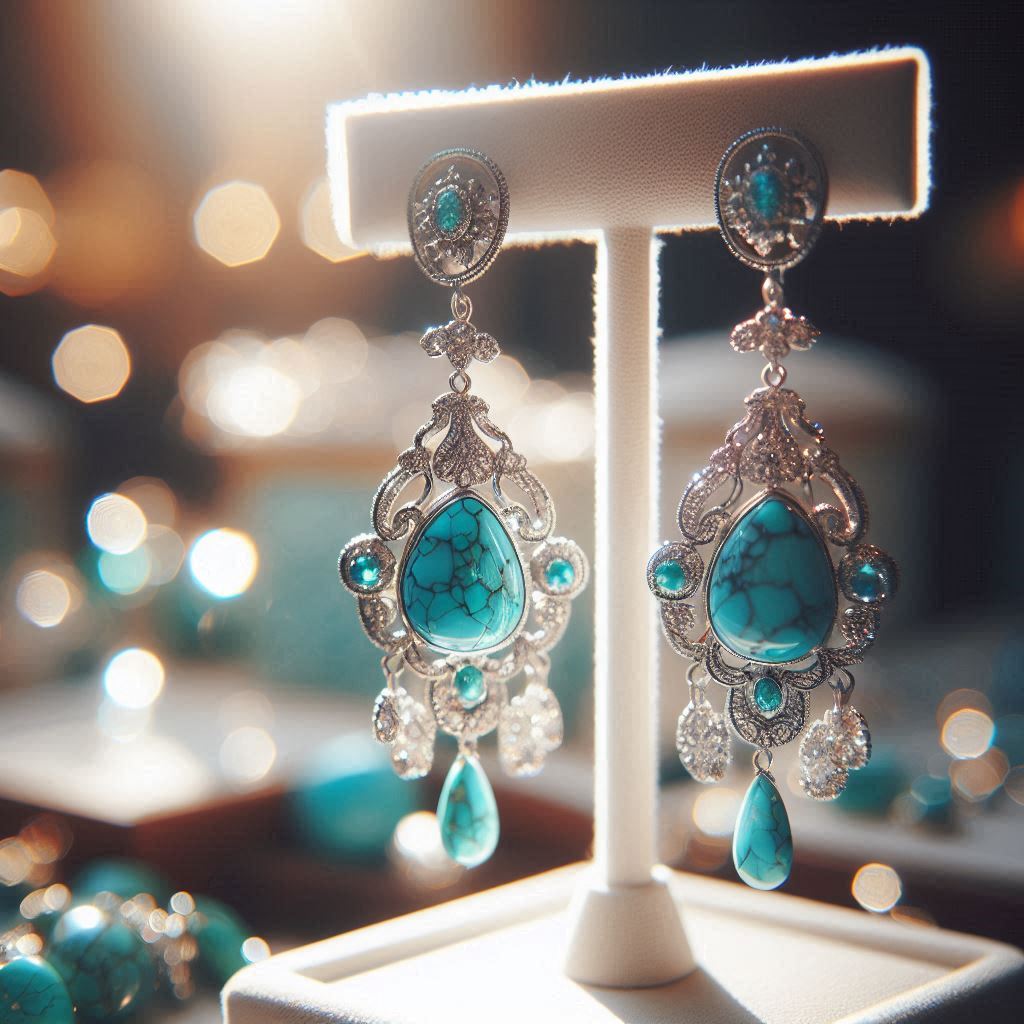
- Home
- Pakistani Jewelry
- Pakistani Gold Earrings


